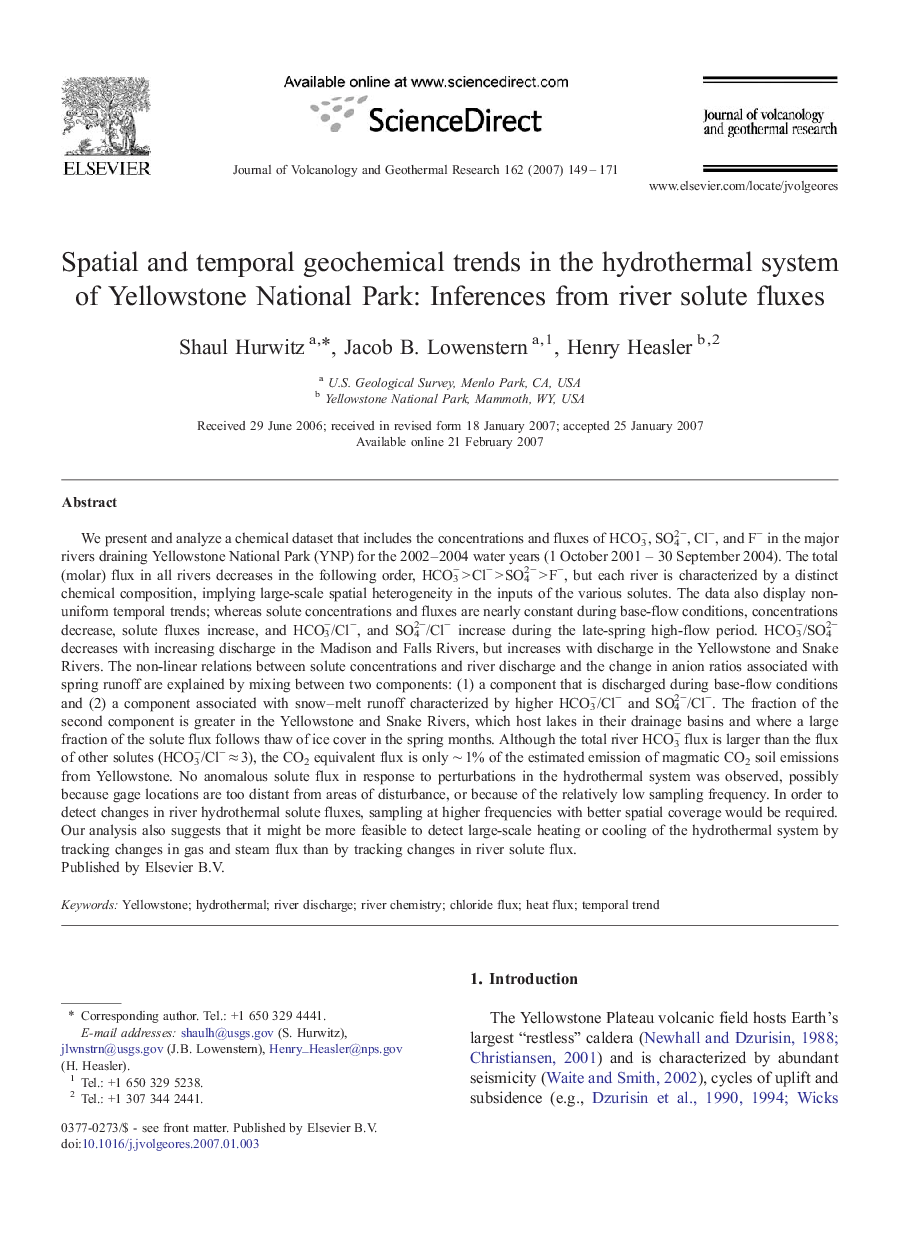| کد مقاله | کد نشریه | سال انتشار | مقاله انگلیسی | نسخه تمام متن |
|---|---|---|---|---|
| 4714912 | 1638464 | 2007 | 23 صفحه PDF | دانلود رایگان |

We present and analyze a chemical dataset that includes the concentrations and fluxes of HCO3−, SO42−, Cl−, and F− in the major rivers draining Yellowstone National Park (YNP) for the 2002–2004 water years (1 October 2001 – 30 September 2004). The total (molar) flux in all rivers decreases in the following order, HCO3− > Cl− > SO42− > F−, but each river is characterized by a distinct chemical composition, implying large-scale spatial heterogeneity in the inputs of the various solutes. The data also display non-uniform temporal trends; whereas solute concentrations and fluxes are nearly constant during base-flow conditions, concentrations decrease, solute fluxes increase, and HCO3−/Cl−, and SO42−/Cl− increase during the late-spring high-flow period. HCO3−/SO42− decreases with increasing discharge in the Madison and Falls Rivers, but increases with discharge in the Yellowstone and Snake Rivers. The non-linear relations between solute concentrations and river discharge and the change in anion ratios associated with spring runoff are explained by mixing between two components: (1) a component that is discharged during base-flow conditions and (2) a component associated with snow–melt runoff characterized by higher HCO3−/Cl− and SO42−/Cl−. The fraction of the second component is greater in the Yellowstone and Snake Rivers, which host lakes in their drainage basins and where a large fraction of the solute flux follows thaw of ice cover in the spring months. Although the total river HCO3− flux is larger than the flux of other solutes (HCO3−/Cl− ≈ 3), the CO2 equivalent flux is only ∼ 1% of the estimated emission of magmatic CO2 soil emissions from Yellowstone. No anomalous solute flux in response to perturbations in the hydrothermal system was observed, possibly because gage locations are too distant from areas of disturbance, or because of the relatively low sampling frequency. In order to detect changes in river hydrothermal solute fluxes, sampling at higher frequencies with better spatial coverage would be required. Our analysis also suggests that it might be more feasible to detect large-scale heating or cooling of the hydrothermal system by tracking changes in gas and steam flux than by tracking changes in river solute flux.
Journal: Journal of Volcanology and Geothermal Research - Volume 162, Issues 3–4, 15 May 2007, Pages 149–171